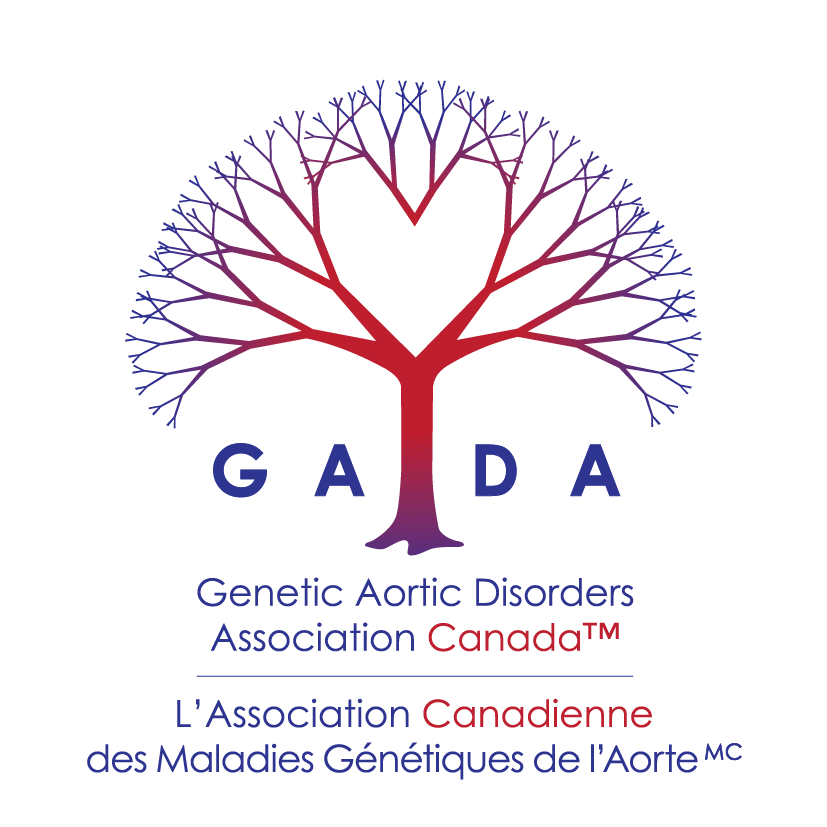2019 AWARD 1:
Montalcino Aortic Consortium Research
$120,000
Funded by GADA Canada & theTemerty Foundation
January 2020 - December 2020
Dianna Milewicz, MD, PhD.
Executive Chair, Montalcino Aortic Consortium, President George Bush Chair in Cardiovascular Medicine, University of Texas at Houston Health Science Centre, Houston, Texas, USA
LAY SUMMARY:
The major diseases affecting the thoracic aorta, aortic aneurysms predisposing to acute aortic dissections (TAAD), cause premature deaths. These deaths are preventable if at risk individuals are identified and optimally managed to prevent aortic dissections. Marfan syndrome (MFS) established that mutations in a single gene (FBN1) can predispose to highly penetrant TAAD. We went on to show that 20% of non-MFS TAAD patients have a genetic predisposition for the disease, inherited primarily in an autosomal dominant manner. To date, 11 genes are validated to harbor pathogenic variants that confer a highly penetrant risk for TAAD, with or without systemic features.
With the identification of each gene predisposing to heritable thoracic aortic disease (HTAD), evidence emerged that the aortic disease presentation and outcome for each HTAD gene differed from both FBN1 and other HTAD genes. Moreover, many of these genes also confer risk for additional vascular diseases, with the location and type of disease varying based on the causative gene. In 2014, the Montalcino Aortic Consortium (MAC) was founded and successfully began to rapidly and efficiently collect vascular disease data on individuals with pathogenic variants (mutations) in HTAD genes worldwide, with the goal of using these data to improve the management and outcomes of these patients through evidence-based treatment guidelines. Subsequently, MAC sites worldwide provided data on cases with pathogenic variants in TGFBR1, TGFBR2, ACTA2, SMAD3, and MYLK.
Using the funding, we will complete the following MAC projects in the next 12 months:
(1) Complete the manuscript describing the MAC composite analysis of the aortic disease phenotype of the first 1038 patients in the MAC registry.
(2) Define the vascular disease phenotype associated with mutations in TGFB2 and TGFB3. We currently have data on 67 cases with either TGFB2 or TGFB3 mutations. The clinical data will be completed on another 13 cases, then the data analyzed and submitted for publication.
(3) Obtain all the images from the TGFB2 and TGFB3 patients for Dr. Morris’ vertebral artery tortuosity index (VTI) project to determine if VTI predicts dissection and publish these findings.
(4) Determine the aortic disease phenotype associated with pathogenic variants in FLNA.
Application of precision medicine to the management of HTAD cases will improve outcomes for these patients but will also affect the management of thoracic aortic disease in the general population. If aortic dissections are to be prevented, additional biomarkers beyond aortic diameter are needed and the proposed studies will pursue such markers for HTAD cases, which may be applicable to TAAD patients in general.
